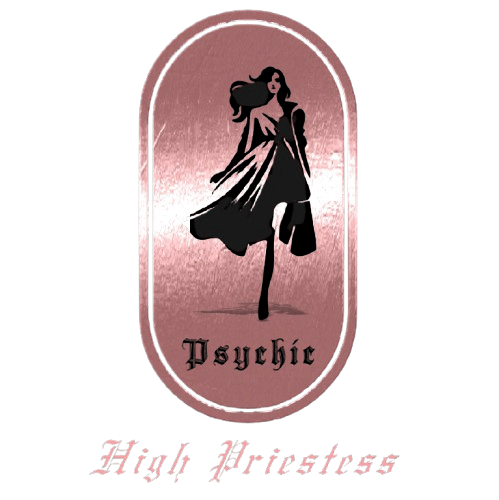Healing from a narcissist relationship is a spiritual as well as an emotional journey. During this process, you not only need patience and awareness but also have to do deep inner work. Understanding how to heal from a narcissistic relationship means confronting wounds that don’t leave visible marks but cause excruciating pain. The layers of manipulation, emotional neglect, and abuse can rob you of self-esteem, confidence, and spiritual clarity. At High Priestesss, spiritual development starts with breaking cycles that no longer serve your higher self.
A lot of people don’t even recognize they are stuck in an unhealthy cycle until they start hating themselves. Identifying the signs of narcissistic abuse and the narcissistic cycle is the first step in healing. This process often consists of three phases: the love-bombing, the devaluation, and the discarding. At first, it seemed too good to be true – just the praise, love, and attention they showered on you. But eventually this becomes criticism, gaslighting, and control. Lastly, when you’ve been sucked dry of any emotion the narcissist might protect, they may finally discard you, indifferent and detached, as if you had never mattered.
Understanding The Male Narcissistic Relationship Pattern
Many times, the relationship pattern between a narcissist and a partner may be male, but not always. Either way, this is the dynamic of the Stockholm syndrome, and you had it bad in the relationship, but you do believe that he is protecting you. At first, the narcissistic partner is loving, protective, and attentive. But then the relationship quickly transforms into a battle over control, manipulation, and emotional refusal, day after day.
Narcissists would often resort to Lovebombing, guilt-tripping, and playing victims to hold a foot of power. On a spiritual level, this can lead to a disconnection from your intuitive self. You start to doubt what you know is true—that love is not control. The spiritual dissonance must be recognized to heal and regain your inner peace. This is why being part of a narcissistic abuse recovery program can be instrumental in helping victims begin to reclaim themselves.
Example Of Narcissistic Behavior In A Relationship
What narcissistic abuse looks like in relationships is someone always being self-serving; never considering the other person’s feelings. A sample of selfish behavior in a relationship: You must do things their way. They might subtly ridicule what you love, cut you off from your friends and family, or weaponize your insecurities against you when you’re fighting. If you’re experiencing any of these patterns, it may be time to fix your relationship and begin setting healthier emotional boundaries.
This is emotional abuse, and it often leaves the victim doubting their reality. On a spiritual level, it dims your light and shrinks you so that you can keep the peace. It is important, first of all, to realize that this is narcissistic behavior. It enables you to untangle from the lie that you are the problem and start to heal your spirit.
What Are The Signs Of A Narcissistic Partner?
Knowing what the signs of narcissistic abuse are is important to protecting yourself from an unhealthy marriage. Some typical signs are less empathy, inability to accept criticism, a need for admiration, and exaggerated self-importance.
Narcissist lovers avoid responsibility, and they project their flaws onto you. They might be lovely to everyone else and a monster to you in private. At a spiritual level, this duality introduces doubt and mistrust into your intuition. When you start to feel tired, anxious, or small in someone’s company on an ongoing basis, there’s a message from your higher self to look further.
What Are The Types Of Narcissistic Relationships?
There are all different faces of narcissistic relationships, and each aspect takes a toll on your soul in a different way. The Covert Narcissist is just that—covert in their narcissism. The covert narcissist, who is subtler to detect but equally cruel at heart, lies platonically in bed with the harem hostess and blames everyone else for the affair. There’s also the communal narcissist, who seems generous or spiritual but exploits that to get some manipulation going and receive some admiration.
There’s nothing different really—removing narcissist techniques like love-bombing, gaslighting, and triangulation becomes essential. All types have the same core traits: lack of empathy, control, and disregard for emotional boundaries. As a soul, it’s necessary to know these types to protect your energy and put more energy into the relationships that reflect your light rather than dissolve it.
Signs Of A Narcissistic Husband
The signs of a narcissistic husband are not always easy to spot, so here are some of the most common traits to look for in relationships, whether married, dating, or in separation or divorce. He might discount your accomplishments, manage your finances, alienate you from your friends and family, or control you with fear and guilt. It is this need always to have the focus on him that will be at the expense of your emotional health.
This kind of marriage can feel like a jail, spiritually. You might lose your vigor, forget your reason for being here, and become too scared to reveal your truth. Acknowledging these signs is an empowering act of self-awareness that can ignite a spiritual awakening and a path to reclaim your sovereignty.
What A Narcissist Does At The End Of A Relationship
When a relationship ends, what a narcissist does at the end of a relationship is perhaps the question that people ask themselves when it becomes clear that this is indeed the end. They might ghost you without a breakup, badmouth you to others, or reappear out of nowhere with sweet nothings about having changed. This is known as “hoovering”—an attempt to suck us back in, a maneuver designed to assert control over our lives.
This time can be emotionally bewildering and spiritually exhausting. It’s important not to go back on that cycle. He has no interest in growth, recovery, contentment, peace, happiness, or just about power; he is a predator type. Shutting the door, severing ties, and going within are the first steps to breaking the pattern and gaining spiritual freedom.
How To Heal From A Narcissistic Relationship
Narcissistic abuse recovery starts with you. You’ve probably spent so much time tending to someone else that your dreams, desires, and spiritual nature took a back seat. At High Priestesss, we encourage grounding rituals—maybe meditation, breathwork, or journaling—to simply start connecting with your truth.
Establish your energetic and emotional boundaries. That may involve going no contact, unfollowing on social media, and saying no to manipulation. Bearer of your truth, reclaim your voice by speaking your truth in a safe space—therapy, spiritual coaching, support groups. These actions allow you to develop the spiritual strength and stamina to renew your confidence and rebuild self esteem after narcissistic abuse.
Spiritual Tools To Support The Healing Journey
You are frayed, but not broken. Tools like crystal healing, Reiki, tarot, and guided meditation can speed your recovery. Amethyst, rose quartz, and black tourmaline are for protection, grounding, emotional equilibrium, and spiritual clarity. Use them for meditation or carry them with you as grounding stones.
And prayer and affirmation are not to be discounted. State your values out loud every day. Say: “I am complete, deserving, and let go of all things not for my highest good.” These practices move your energy from survival to empowerment and help you to remember who you are beneath the wounds. Rebuilding your life after narcissistic abuse is not a race—it’s about getting back into divine alignment.
Rediscovering Your Identity After Narcissistic Abuse
You leave a narcissistic relationship and feel like a stranger to yourself. Reunion is a crucial part of the cure. Reconnect to your passions, creativity, and your callings from a soul level. Whether painting, dancing, learning astrology, or immersing yourself in sacred texts, allow yourself the freedom to live passionately and authentically.
There’s more at stake in this rediscovery process than mere hobbies. It’s about reclaiming your soul. You were never the problem. That the narcissist can’t love is not a statement about your worth. You are a beam of love light. You deserve peace, respect, and unconditional love. Let yourself be shaped by the pain, not defined by it.
Also See: Attract Love into Your Life!
How To Stop Self Sabotage In Relationships
As you heal, be mindful of patterns that emerge in new relationships. Many survivors unconsciously repeat behaviors rooted in past trauma. Learning how to stop self sabotage in relationships is part of breaking free from the old narrative. Replace fear with self-compassion, and confusion with clarity.
Conclusion
Letting go of a narcissistic relationship is an ending and a beginning. It is the end of a painful chapter and the beginning of a sacred one, where you start to put yourself first, honor your soul’s truth, and reconnect to divine inspiration. The road can be long, but with every stride forward, you get closer to the confident, vibrant soul you were meant to be.
At High Priestesss, we salute your strength. You are not alone; your healing is not just possible—it’s already happening. Unearth the past, stabilize your energy and ascend. Your spiritual awakening starts when you choose you.
FAQs
How long does it take to heal from a narcissistic relationship?
Healing time differs for everyone. Some may feel better in a few months, while others need longer. It depends on the depth of the emotional damage and how much support and inner work you do. With time, patience, and the right guidance, you can fully restore your sense of self.
What are the 5 things to never do after breaking up with a narcissist?
Avoid returning to the relationship, seeking closure, stalking them online, isolating yourself, or ignoring your emotional needs. These behaviors can pull you back into the same cycle and delay your progress.
What are the 4 D’s of narcissistic abuse?
They include Deny, Dismiss, Devalue, and Discard. These tactics are used to confuse, control, and break down your sense of reality. Recognizing these patterns is the first step toward protecting your mental and emotional health.
What mental illness is caused by narcissistic abuse?
Prolonged emotional abuse can lead to issues like anxiety, depression, complex PTSD, and chronic self-doubt. The emotional toll can be deep, but with support and care, you can heal and regain emotional stability.




